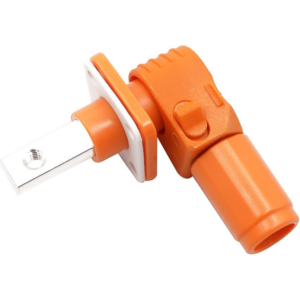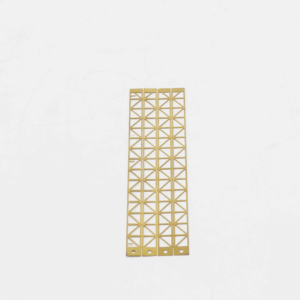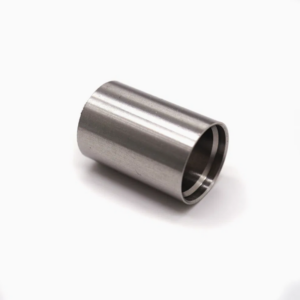Sheet metal grinding is both a science and an art. Whether you’re refining metal surfaces for high-precision applications or preparing metal for subsequent processes, mastering grinding techniques is essential for delivering exceptional results. This skill plays a crucial role in a variety of industries such as automotive, aerospace, and manufacturing. At Topmetalstamping, we understand the importance of using the right tools and techniques to achieve top-tier finishes and dimensional accuracy. In this blog, we’ll explore the various grinding methods, grinder types, and essential tips to help you achieve flawless sheet metal finishes.
What Is Sheet Metal Grinding?
Sheet metal grinding is a process that utilizes abrasive tools to smooth, shape, or polish metal surfaces. The primary goal is to remove excess material, create uniform surfaces, and refine edges. This process is vital for improving both the functionality and appearance of sheet metal products. Grinding is widely used to prepare metal for subsequent treatments, such as coating or painting, and to achieve specific dimensional tolerances.
Sheet metal grinding is particularly valuable in industries where tight tolerances and smooth finishes are critical. Metals such as steel, aluminum, and brass can all be ground using different abrasive methods, each tailored to the specific material and desired outcome. As a versatile technique, sheet metal grinding can also be used for finishing complex shapes, deburring edges, or removing rust and oxidation.
Types of Grinding Processes
There are several grinding methods used in sheet metal fabrication, each suited for specific applications. Below are some of the most commonly used grinding processes:
1. Surface Grinding
Surface grinding is one of the most widely employed grinding techniques for metal sheets. This process is designed to achieve a smooth, flat surface with minimal surface defects. It’s commonly used in the preparation of metal parts for further treatments, such as coatings or finishes that require a flawless base.
In surface grinding, the sheet metal is placed on a magnetic chuck or fixture, which holds it securely during the grinding process. A rotating abrasive wheel is then applied to the surface of the metal to remove any imperfections. The result is a smooth, uniform surface free of burrs, scratches, or oxidation. Precision and consistency are key in surface grinding, and the process can achieve tolerances as tight as a few microns, making it essential for high-precision manufacturing.
2. Creep-feed Grinding
Creep-feed grinding is an advanced grinding technique used for deep cuts and high material removal rates. Unlike traditional grinding methods, which involve shallow cuts and repeated passes, creep-feed grinding allows for a deeper cut in a single pass. This method is ideal for working with harder metals or complex shapes that require precise dimensions.
The process begins with the grinding wheel being fed slowly into the material at a controlled rate, allowing for the removal of large volumes of material with minimal heat buildup. Creep-feed grinding is commonly used in industries such as aerospace, automotive, and tooling, where high material removal rates and tight tolerances are required.
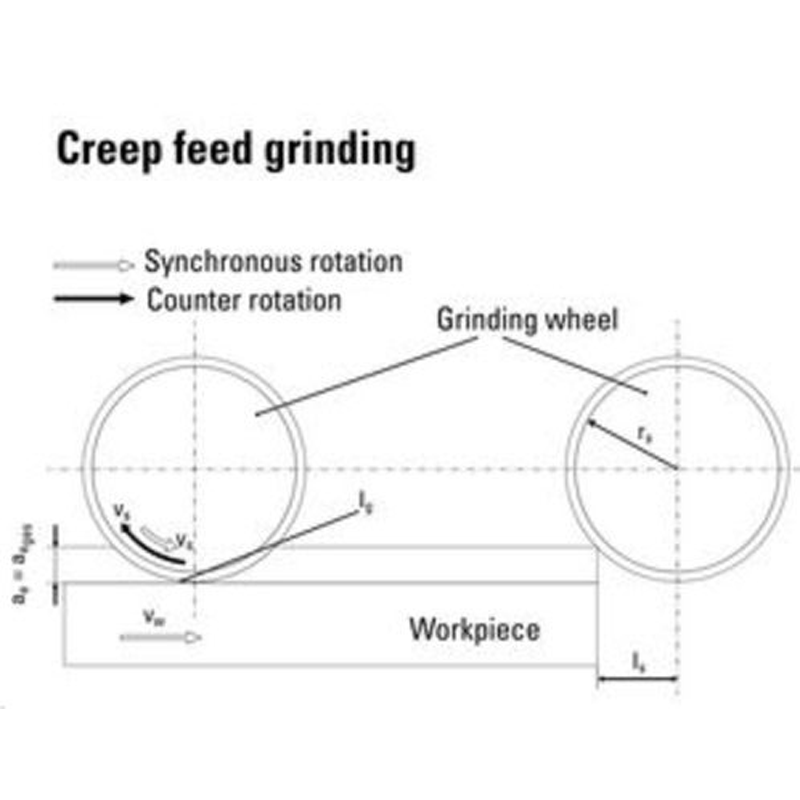
3. Center-type Grinding (Cylindrical Grinding)
Center-type grinding, also known as cylindrical grinding, is used for refining the surfaces of cylindrical metal objects, such as rods and tubes. This process involves placing the metal piece between two centers that rotate it while a grinding wheel moves laterally along the length of the cylinder.
This method is crucial for achieving precise dimensions and a smooth finish on cylindrical workpieces. In addition to maintaining dimensional accuracy, center-type grinding ensures that the workpieces are perfectly round and free of surface defects. It’s particularly useful in the production of components for the automotive, aerospace, and machinery industries, where precision is paramount.
4. Electromechanical Grinding
Electromechanical grinding is a hybrid technique that combines mechanical grinding with electrical discharge machining (EDM). In this process, an electrical current is passed through the workpiece and grinding wheel to enhance the material removal rate. The combination of electrical erosion and abrasive grinding provides highly accurate shaping and improved surface finishes.
This technique is commonly used for grinding hard or fragile materials that may be difficult to machine using traditional methods. Industries such as aerospace, medical device manufacturing, and precision engineering frequently utilize electromechanical grinding for its ability to achieve ultra-tight tolerances and superior surface finishes.
5. Electrolytic In-Process Dressing (ELID) Grinding
ELID grinding is an advanced process that continuously dresses the grinding wheel during operation to maintain its sharpness and effectiveness. This technique is used to achieve ultra-precise finishes on metal surfaces, often in industries that demand mirror-like finishes, such as optical component manufacturing and precision instruments.
The process involves applying electrolytic fluid between the grinding wheel and an electrode, which continuously refreshes the surface of the wheel by exposing fresh abrasive material. ELID grinding is ideal for achieving the highest levels of surface finish and geometric accuracy.
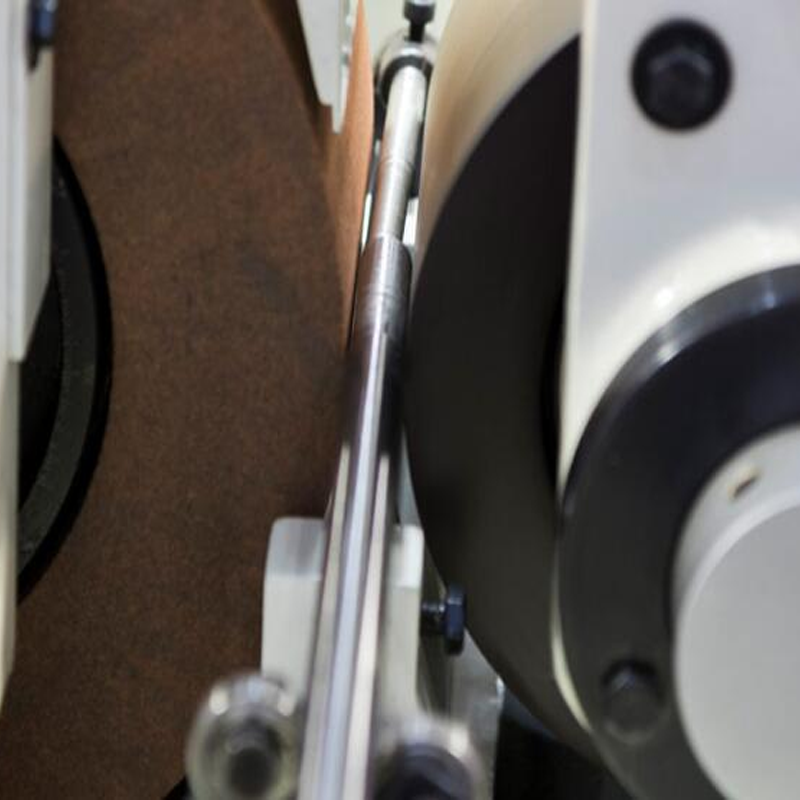
Tips for Effective Sheet Metal Grinding
Achieving the best results from sheet metal grinding requires more than just skill—it involves using the right tools, techniques, and proper maintenance. Here are some essential tips to help you master the grinding process:
1. Choose the Right Grinder and Abrasive Wheel
Selecting the appropriate grinder and abrasive wheel is critical to the success of your grinding project. The grinder type and wheel material should match the specific metal you’re working with and the desired finish. Softer wheels are ideal for hard metals, while harder wheels are suited for softer materials.
2. Maintain Proper Wheel Speed
Each grinding application has its own optimal wheel speed. It’s important to follow the manufacturer’s recommendations for wheel speed settings to ensure efficient grinding and avoid overheating the workpiece. The correct speed also helps maintain the effectiveness of the grinding wheel.
3. Use Adequate Pressure
The amount of pressure you apply during grinding plays a significant role in the outcome. Too much pressure can cause overheating and damage both the workpiece and the wheel, while too little pressure can lead to inefficient grinding and poor finishes. Finding the right balance is key to achieving optimal results.
4. Keep the Workpiece Cool
Overheating during grinding can alter the metal’s properties, leading to warping or other defects. Use coolants or wet grinding methods to keep both the grinding wheel and the workpiece at an ideal temperature. This will also help to achieve a better surface finish and preserve the integrity of the metal.
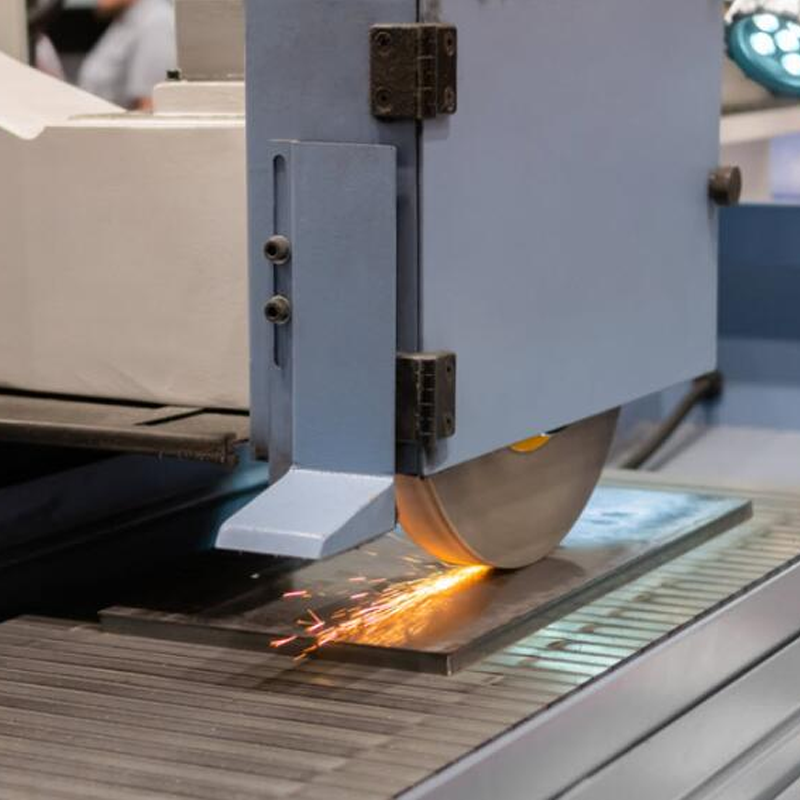
5. Dress the Grinding Wheel Regularly
Grinding wheels can become clogged with metal filings over time, reducing their efficiency. Regularly dressing the wheel using a diamond dresser will clear any buildup and expose fresh abrasive particles, maintaining the wheel’s effectiveness throughout the process.
6. Ensure a Secure Setup
Before beginning any grinding operation, make sure the metal sheet is properly secured. A secure setup prevents the workpiece from moving during grinding, which can lead to inaccurate finishes. Use fixtures, clamps, or magnetic chucks to ensure stability.
7. Wear Safety Gear
Safety is crucial when working with grinders. Always wear safety glasses, gloves, and hearing protection. Ensure that the machine’s safety guards are in place to protect yourself from flying debris and other hazards.
8. Inspect the Grinding Wheel for Damage
Before each use, inspect your grinding wheels for cracks or any other damage. A damaged wheel can be dangerous and affect the quality of the workpiece. Replace any damaged wheels immediately.
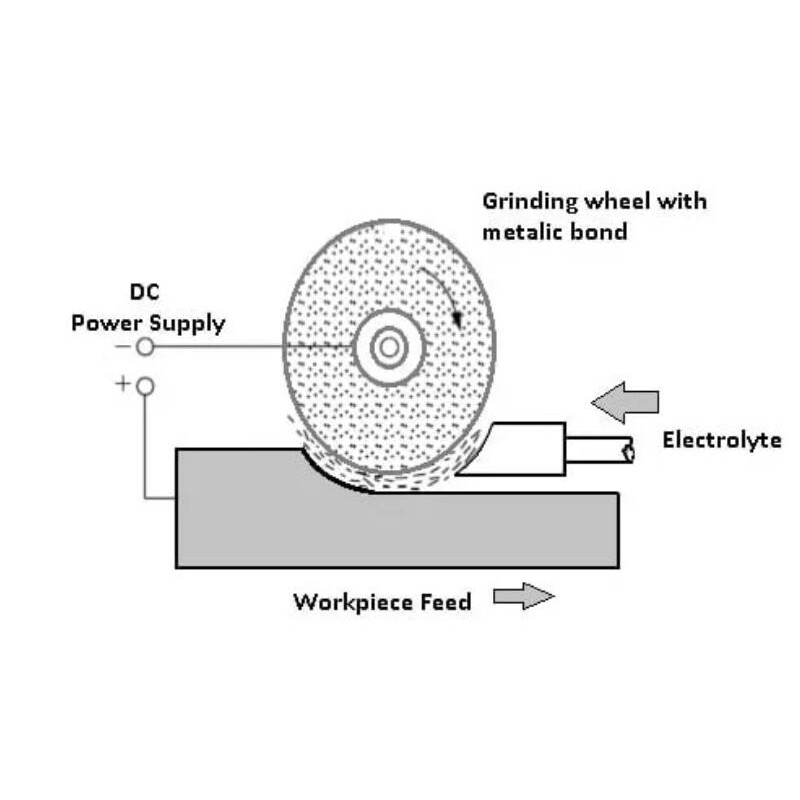
9. Use Proper Techniques
Mastering the right grinding technique is essential. Moving too quickly over the workpiece can leave uneven spots, while moving too slowly can cause unnecessary wear on the wheel. Finding the proper balance will ensure consistent results.
10. Clean Your Work Area
A clean work environment is essential for safety and efficiency. Metal filings and dust can interfere with the grinder’s operation and affect the finish of your work. Keep the area tidy and dispose of debris regularly.
Conclusion
At Topmetalstamping, we understand the importance of precision in every aspect of metal fabrication, including grinding. Our expertise in sheet metal grinding, combined with state-of-the-art equipment, ensures that we deliver top-quality products with flawless finishes. Whether you’re working with aluminum, steel, or specialized alloys, our team is here to provide guidance, support, and solutions tailored to your specific needs.
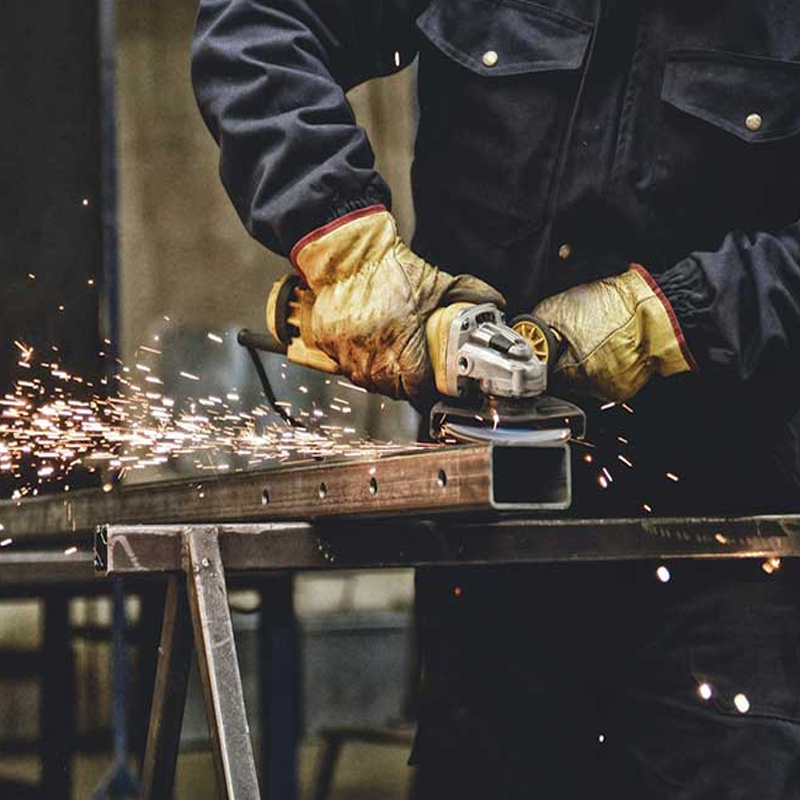
If you’re looking for professional assistance with your grinding projects, don’t hesitate to reach out to us. At Topmetalstamping, we’re committed to helping you achieve outstanding results. Contact us today and let us help you elevate the quality of your sheet metal products.

